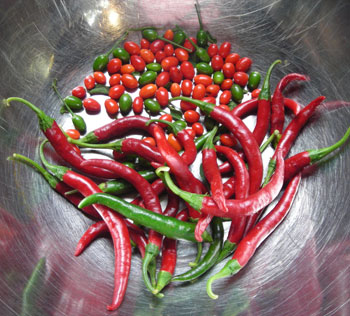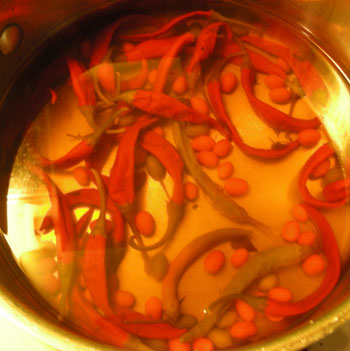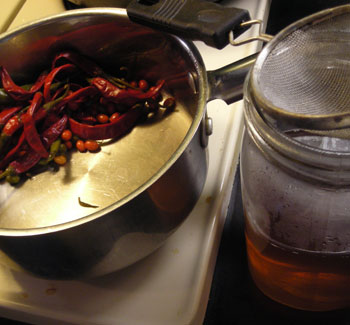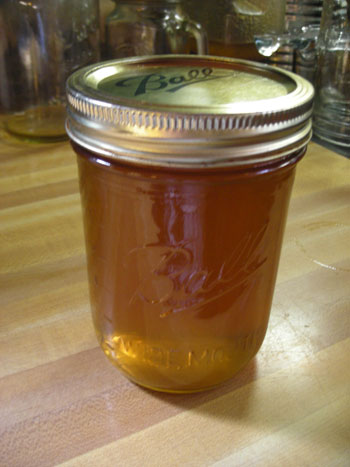Jefferson-era Recipe: Pepper Vinegar
Time for the October installment of our monthly series in which we post a recipe from The Virginia House-wife, a recipe book published in 1824 by Mary Randolph, kinswoman to Thomas Jefferson. Leni Sorensen, our African American Research Historian and a culinary historian of national repute, has once again made this month's dish and here we include her notes and pictures.
Mary Randolph, The Virginia House-Wife, 1824; facsimile of first edition, Historical notes and commentaries by Karen Hess, University of South Carolina Press, 1984, p. 202.
Pepper Vinegar
October 2011
The original recipe from Mary Randolph:
Get one dozen pods of pepper when ripe, take out the stems, and cut them in two ; put them in a kettle with three pints of vinegar, boil it away to one quart and strain it through a sieve. A little of this is excellent in gravy of every kind, and gives a flavor greatly superior to black pepper ; it is also very fine when added to each of the various catsups for fish sauce.
Leni's notes:
I think it is instructive to observe that in Jefferson’s day and certainly at Mary Randolph’s table spicy and otherwise richly seasoned foods were not uncommon. Randolph routinely calls for garlic and at least sixteen other herbs in her cookery. Her Curry Powder recipe calls for turmeric, coriander, cumin, nutmeg, mace, and cayenne pepper! Her book includes recipes for Tarragon Vinegar (one of Jefferson’s favorites, we know), for Mushroom Catsup, and a Tomata Marmalade calling for black pepper, cloves, and garlic, and which we are told is excellent for seasoning gravies. Only much later in the 19th century did the American cookery establishment begin to shift our national foodways toward a blander palette of often overcooked foods.
In my ‘how to’ pictures I am using a mixture of Cayenne and Texas Bird peppers; as much for the blending of flavors but mostly because it’s what I have in my garden this year.
You can use any hot pepper although Jalaneno might not be spicy enough for die-hard chili heads. I use apple cider vinegar (5% acidity) because I like the taste. Good quality wine vinegar, red or white, will do fine but plain white distilled vinegar will likely be too sharp.
I would recommend you use rubber gloves when pulling out the chilis, and cutting the chilies in half. And keep your fingers away from your eyes, please! I don’t cut up the tiny Texas Bird Peppers. Make sure there is plenty of kitchen ventilation when boiling the mixture as pepper fumes can be pretty strong. 

Certainly you can double/triple this recipe – actually more a sketch than a recipe – and it bottles well for gifts. 
If you do make extra either seal it in a water bath (you canners will know what I mean) or, much easier, just refrigerate it. For decorative purposes you could leave several peppers in each jar if so inclined.
Once finished, and while wearing your rubber gloves, wash the jars and all the cooking and cutting utensils with very hot water and soap so there is no chili residue in or on them.

